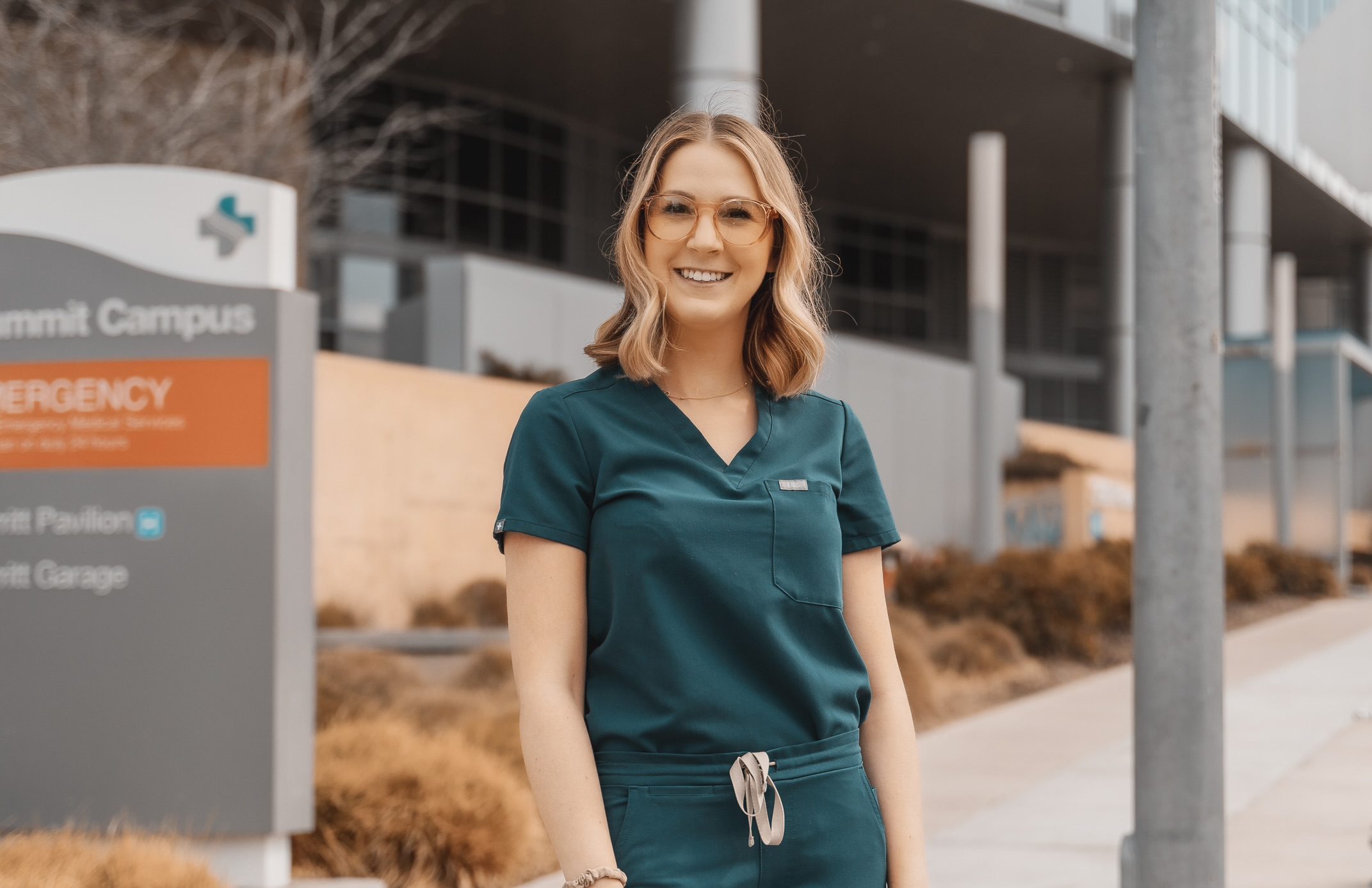By Sierra Bailey, RN, Alta Bates Summit Medical Center
Article and photos courtesy of Samuel Merritt University and SMU News
On the nights and weekends I’m on call, I don’t venture much beyond my home. Even grocery shopping is tricky. When I get a page, I have just 30 minutes to be at Sutter’s Alta Bates Summit Medical Center in Oakland, changed into scrubs, and ready to attend to the patient I’ve been called in to assist. If I’m called in, that means they are in crisis.
Most times, they initially come into the ER with heart attack symptoms. If their condition gets even worse while there, they’ll need to get into the cardiac catheterization lab immediately, where I work as a nurse, alongside excellent techs, other nurses, and the cardiologist to open the blockage in the coronary artery. I like to think of ourselves as plumbers.
Usually, patients are very symptomatic, with low blood pressure, fatigue, severe chest pain, even nausea. We work rapidly to get them sedated enough to lie still for us to put in wires and catheters through the artery in the groin while using live X-ray. From there, we place a stent to open the blockage. The relief is usually instant. The patient feels worlds better and will ask, “What did you do?” Seeing that change is so rewarding.
Cardiac catheterization lab nurse is just the most recent role where I’ve challenged myself. After graduating from Samuel Merritt University’s Bachelor of Science in Nursing program in 2016, I started in the intensive care unit (ICU) at Alta Bates Summit with aspirations of transitioning into the cardiopulmonary unit (CPU), also known as the cardiac and lung intensive care department. In 2017, those dreams became a reality. I cared for patients who had just had mitral valve repairs/replacements, aortic valve repairs/replacements, or coronary artery bypass surgery. All of the patients became incredibly special to me. The most rewarding part was seeing their quick progress. Patients who are intubated and sedated from surgery are sitting up in a chair eating breakfast with their lines and tubes attached the next morning.

Sierra Bailey, RN, works in the Cardiac Catheterization lab at Alta Bates Summit Medical Center in Oakland
I occasionally fulfilled charge nurse duties in the CPU. And I did pre-operative teaching with patients and families on what to anticipate before, during, and after surgery, which helped to alleviate their fears.
Simulation training prepared me
From the time I started at Alta Bates Summit, I felt prepared and ready to take on challenges. I came out of Samuel Merritt with the skills I needed to be successful, thanks to clinical experiences and mock simulations. The simulations might have seemed silly at the time, since it was actors and not real patients, but the instructors really put you on the spot and made sure you could handle high-pressure situations. And learning in the Bay Area was an invaluable opportunity to work with a diverse patient population.
During the COVID-19 pandemic, we have seen some COVID patients come through the catheterization lab. It has been eye-opening. These patients are in the lab because of COVID-related complications and are critically ill. They are definitely sicker than most patients we normally see.
Working as a registered nurse during the pandemic has proven difficult and has tested many of us on emotional and physical levels. At the same time, I could not be prouder to be a nurse in this pandemic, taking care of some of the sickest patients I have ever seen.





